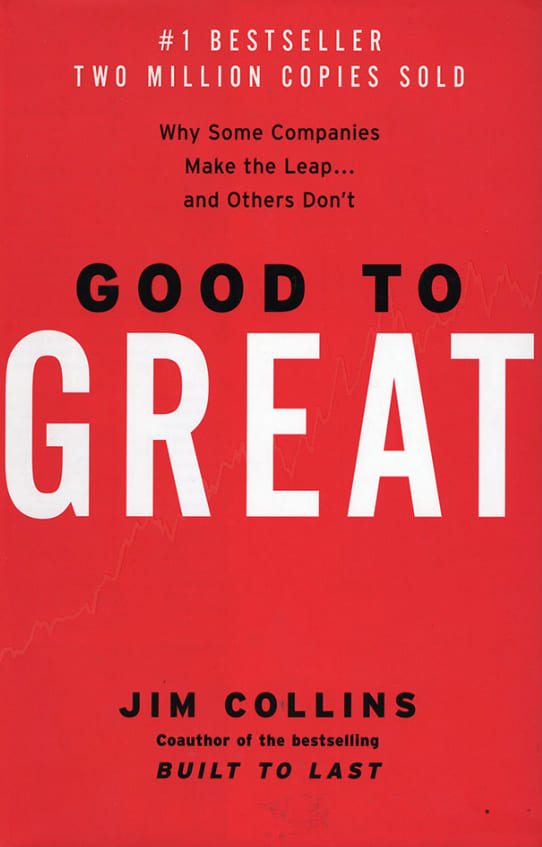Good to Great: Why Some Companies Make the Leap... and Others Don't
James C. Collins

To find the keys to greatness, Collins’s 21-person research team read and coded 6,000 articles, generated more than 2,000 pages of interview transcripts and created 384 megabytes of computer data in a five-year project. The findings will surprise many readers and, quite frankly, upset others.
Key Summary
“Good to Great: Why Some Companies Make the Leap… and Others Don’t” by Jim Collins is a business book that explores the qualities and characteristics that distinguish successful companies from their less successful counterparts. In summary, “Good to Great” offers a framework for companies looking to achieve lasting success and offers practical advice for those seeking to improve their companies.
Takeaways
1. Start with who, not what: Companies should focus on hiring the right people, rather than figuring out what they want to do.
2. The Hedgehog Concept: Companies should focus on doing one thing exceptionally well, rather than trying to be all things to all people.
3. The Flywheel Effect: Success builds upon success and it is the gradual accumulation of small improvements that leads to greatness.
4. The Stockdale Paradox: Successful companies maintain an unwavering faith in their ultimate success, even in the face of adversity.
5. Level 5 Leadership: The best leaders are humble and determined, focusing on the success of their companies and not their own personal recognition.
6. The Technology Accelerator: Companies that use technology effectively can significantly improve their performance.
7. The Doom Loop: Avoiding the mistakes of others is a key component of success.
8. The Culture of Discipline: Companies that have a strong sense of discipline, purpose, and teamwork are more likely to succeed.
9. The Right People on the Bus: Companies should focus on putting the right people in the right roles, rather than trying to change their employees.
10. The Flywheel and the Doom Loop in Action: The concepts of the flywheel and the doom loop should be applied to every aspect of a company’s operations, from sales and marketing to research and development.